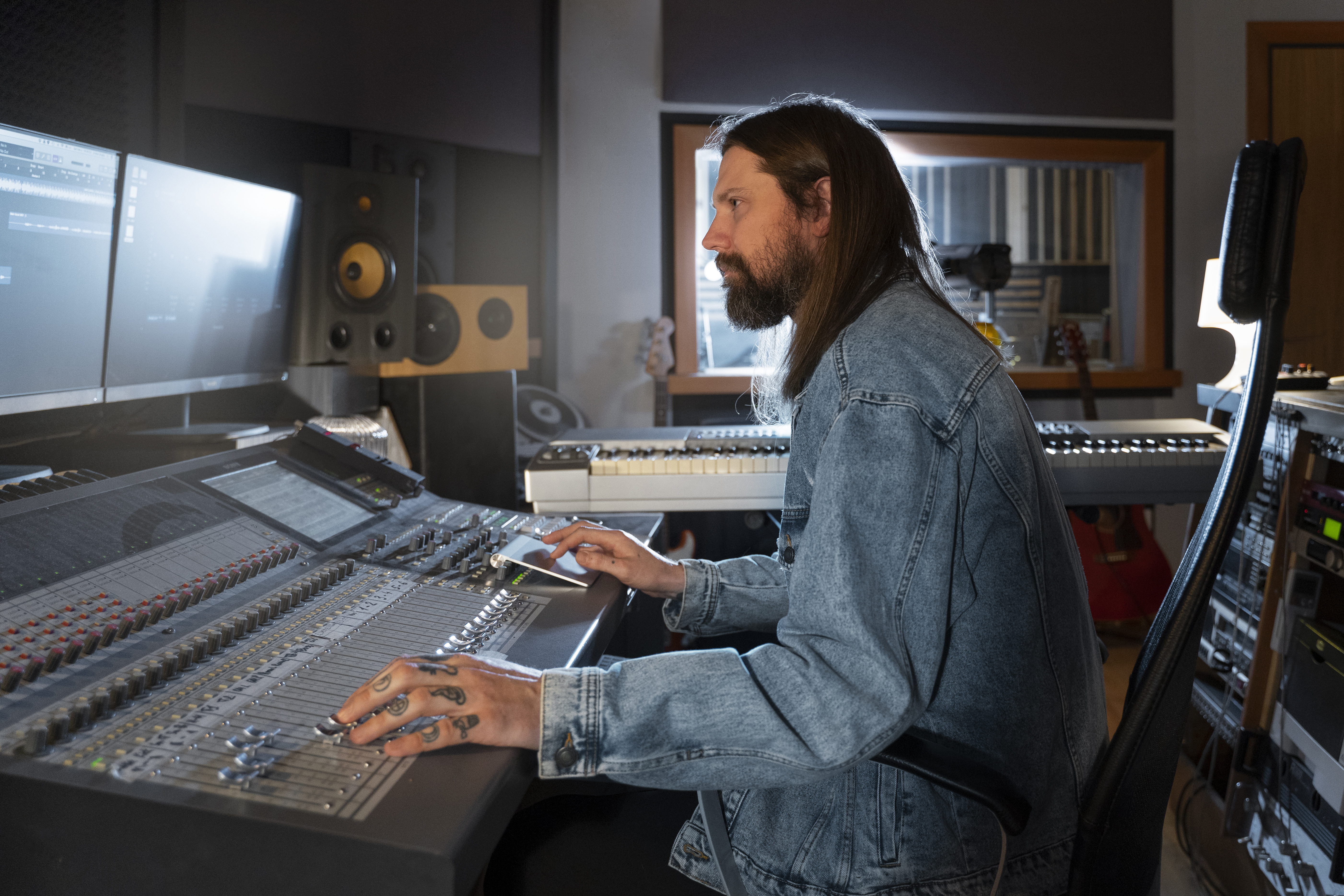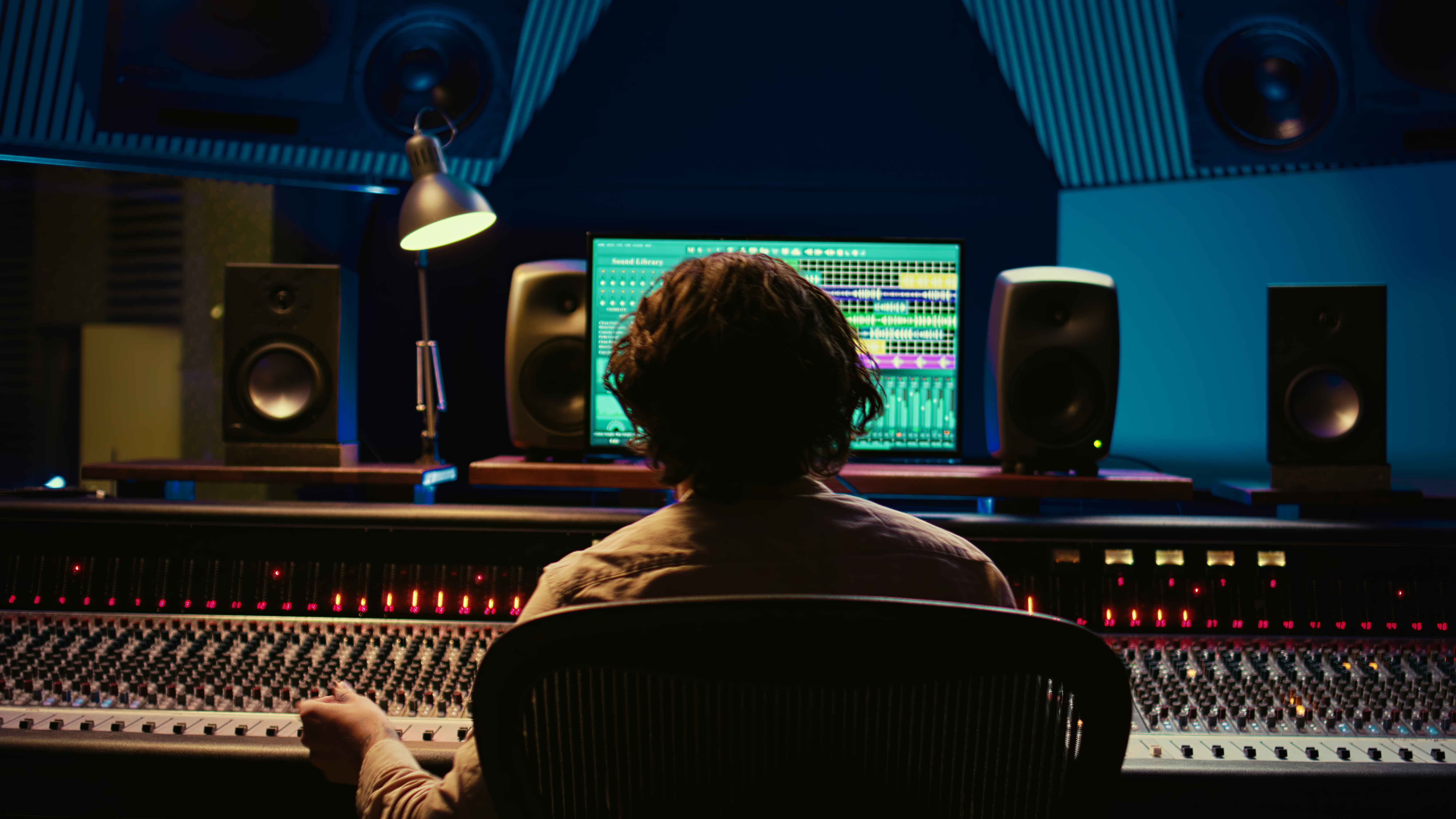Music Production for Beginners: A Step-by-Step Guide
by WriteSeen
Embarking on the journey of music production for beginners can feel overwhelming. Let’s simplify the process and give you the tools to create captivating tracks.
Our step-by-step guide will help you:
- Grasp the basics of music production—from composing to mixing.
- Discover essential gear without breaking the bank.
- Navigate the music production process, from idea conception to the final polished product.
Understanding the Basics of Music Production
Music production is the heart of creating captivating music. It involves several key stages—composing, recording, editing, and mixing. Getting to grips with these processes isn't just about pressing buttons. It’s about interpreting and shaping sound through deliberate action and creativity. This understanding forms the backbone of transforming an idea into an audible masterpiece.
Key Roles in Music Production
- Producer: Often the driving force, producers oversee the creative and technical direction. They ensure the final product meets artistic and industry standards.
- Sound Engineer: Responsible for capturing and refining audio. They focus on clarity and quality, making sure every recorded note resonates.
- Artist: The face and sound of the music, embodying the message and emotion. They work closely with producers to align their vision with the sound.
Process Overview
- Composing: Generating the musical ideas, often a collaborative effort between the producer and artist.
- Recording: Capturing these ideas using microphones, instruments, and software. Every sound is laid down with precision.
- Editing: Polishing each track—fine-tuning, trimming, and layering sounds.
- Mixing: Blending all audio tracks into a cohesive whole. EQ, effects, and panning bring balance.
Through each step, maintaining clarity of vision is crucial. In our collaborative network, this synchronized effort thrives when creators connect over common goals, refining concepts into polished productions.

Essential Gear for Music Production
Getting started with music production doesn't require breaking the bank. With the right gear, anyone can set up a basic studio capable of producing high-quality tracks. This equipment will be your tools for creativity—helping you transform ideas into reality.
Must-Have Equipment
- Computer: Your primary tool. Even entry-level models with sufficient RAM can handle basic tasks without issues.
- Digital Audio Workstation (DAW): This software lets you create, edit, and produce music. Choose user-friendly options like Ableton Live for a seamless experience.
- Audio Interface: Converts sound into digital signals for the computer, boosting quality. Compact models like the Focusrite Scarlett are beginner-friendly.
- Headphones: Essential for accurate audio monitoring and mixing. The right pair ensures you hear every detail.
- Microphone: Use a condenser mic for recording vocals and instruments. It adds depth and clarity.
Setting Up
Equip your studio efficiently. Consider our collaborative global hub, which ensures seamless interaction. Be it sound engineers or budding artists, our platform nurtures these connections. The right tools, combined with our network, help you unlock your production potential.
Choosing the Right Digital Audio Workstation (DAW)
Your DAW is the heartbeat of your music production journey. It plays a crucial role in executing every stage of production effectively. Picking the right one is about finding software that complements your style and workflow preference.
Steps to Pick a DAW
- Functionality: Look for a DAW that aligns with your needs. Consider ease of use, plugin compatibility, and track limits.
- Trial Periods: Many DAWs offer trial versions. Testing them helps you find one that suits your workflow.
- Community and Support: A robust support system aids learning. DAWs with active user forums provide valuable tips and problem-solving.
Recommendations
- GarageBand: Perfect for Mac users starting out. Simple yet powerful.
- FL Studio: Known for its intuitive user interface and versatility. Ideal for electronic producers.
Selecting a DAW should reflect your creativity. Our network of creators is constantly exploring new techniques, offering insights into optimizing DAW use. That collective expertise is at your fingertips here.
How to Set Up Your Home Studio
A home studio is your sanctuary for creativity and productivity. Setting it up thoughtfully can significantly enhance your ability to produce high-quality music from the comfort of your own space.
Setting the Stage
- Room Choice: Pick a quiet, well-sized room. Avoid spaces with too much noise or echo.
- Acoustic Treatment: Use curtains, carpets, and acoustic foam to minimize sound reflections. Aim for a balanced environment.
- Gear Placement: Organize equipment ergonomically. Efficiency reduces fatigue and boosts creativity. Pointing speakers directly at your ears offers better sound accuracy.

Creating an Efficient Workflow
- Cables and Connectivity: Tidy cables to avoid tangling and accidental disconnections. It enhances safety and focus.
- Comfort: Select an adjustable chair and desk height. Comfortable workspaces promote long, productive sessions.
Your home studio is more than just a collection of gear—it's where ideas come to life. Whether you're a musician laying down fresh tracks or an engineer refining them, our community offers guidance, from choosing equipment to arranging your creative space effectively.
Music Production Process: From Idea to Final Product
Transforming a musical idea into a polished final product is an intricate journey. Understanding this process is key for any beginner looking to break into music production. Here's how each stage contributes to crafting a track that resonates.
Pre-Production: Laying the Groundwork
Before any recording starts, it's essential to plan. This stage involves setting your objectives, gathering your materials, and deciding on the style of your track. Consider this your roadmap.
- Brainstorming: Jot down ideas, melodies, and lyrics. Layering concepts can help form a solid foundation.
- Equipment Check: Ensure all tools are ready and functioning to avoid hiccups during recording.
- Scheduling: Allocate time for each stage, helping you stick to deadlines and maintain motivation.
Details Matter: Successful pre-production saves time and ensures a smoother workflow, keeping you focused on creativity rather than troubleshooting.
Recording: Capturing Your Sound
This is where your musical creation begins to take shape. It's all about capturing your sound clearly and accurately.
- Vocals and Instruments: Use the right microphone technique to enhance clarity. Focus on quality, not quantity.
- Environment: Ensure your recording space supports the best sound capture by reducing ambient noise.
- Takes and Retakes: Don’t settle for mediocre recordings. Multiple takes allow you to choose the best performance.
Focus on capturing raw energy and emotion. This stage sets the tone for everything that follows.
Editing: Perfecting the Details
Editing refines your recordings, aligning them with your artistic vision. It's about removing distractions to let your core message shine.
- Trimming and Cutting: Remove unnecessary parts and tidy the recording. Simplicity can emphasize the core message.
- Balancing Levels: Adjust volumes for consistency and clarity.
- Timing Adjustments: Align beats and rhythms to ensure a seamless blend.
Mixing: Unifying the Sound
Mixing brings cohesion to your music. Here, you unify individual elements to create a harmonious track.
- Equalization (EQ): Adjust frequency levels for balance.
- Panning: Position elements in the stereo field for spatial effect.
- Effects: Tastefully add reverb, delay, and other effects to enhance your music.
The goal? A mix that captivates listeners, drawing them into the layers of your track.
Mastering: Polishing the Final Product
The final step—mastering turns your mix into a polished product ready to be shared with the world.
- Loudness Optimization: Ensures consistency across different playback systems.
- Final EQ Adjustments: Subtle tweaks to provide clarity and dynamics.
- Export: Choose the right formats and bit rates for distribution.
Mastering is about subtlety. It’s the cherry on top, refining the work you've already put in.
Exploring Music Production Techniques and Tips for Beginners
Music production is a vast field, and mastering techniques takes practice. For beginners, starting with fundamental strategies can accelerate your growth and enhance your creative projects.
Layering for Depth
Layering involves stacking multiple sounds—such as vocals or instruments—to create depth and fullness.
- Vary Textures: Combine different instruments and sounds to create a richer experience.
- Consider Frequency: Ensure different layers occupy their own frequency space to avoid muddiness.
- Dynamics: Control the volume of each layer for balance and emphasis.
Layering adds complexity, helping your music stand out.
Automation: Adding Movement
Automation injects life into your tracks by changing parameters over time.
- Volume Automation: Create dynamics by adjusting volume levels throughout the track.
- Effect Automation: Alter effects—such as reverb and delay—to maintain interest and momentum.
- Panning Automation: Enhance the stereo field by moving sounds between left and right channels.
Automation brings sophistication, keeping listeners engaged.

EQing: Achieving Clarity
Equalizing (EQ) is about tailoring frequencies for clarity and balance. This technique is crucial for a well-defined sound.
- Cut Problem Frequencies: Remove unwanted sounds that cause muddiness or harshness.
- Boost Where Needed: Enhance frequencies that add character and presence.
- sculpt Sound: Prevent clashing of different instruments by assigning each its own space within the mix.
Mastering EQing transforms a cluttered recording into a crystal-clear production.
How to Overcome Common Challenges in Music Production
The path to creating incredible music is dotted with challenges. Recognizing these obstacles—and knowing how to navigate them—enables you to stay on track and continue growing as a producer.
Tackling Creative Blocks
Sometimes, ideas stall. Overcoming creative blocks requires a change of perspective and environment.
- Switch Tasks: Move on to another task. Doing something fresh can reignite inspiration.
- Collaborate: Engage with other musicians or join music-producing forums. New input often sparks new ideas.
- Break Down Steps: Simplify tasks into smaller, manageable parts to avoid overwhelm.
With these strategies, you maintain momentum and stay engaged with your project.
Resolving Technical Issues
Technical challenges can disrupt your creative flow. Here’s how to stay ahead.
- Routine Maintenance: Regularly update your software and check equipment functionality.
- Troubleshooting Resources: Use online forums or creative communities to solve challenges.
- Backups: Always back up projects to safeguard your work against unforeseen issues.
By streamlining technical operations, you ensure your focus remains on creativity.
Embracing Feedback
Feedback is invaluable. Harnessing it properly can push your project to the next level.
- Seek Constructive Criticism: Engage with peers who offer honest, helpful feedback.
- Implement Suggestions: Apply changes that enhance your work without compromising your vision.
- Iterate: Continue revising your track until you’re satisfied with the result.
With feedback, you refine your sound and develop sharper skills.
Conclusion: Your Journey in Music Production
Your journey in music production is a rewarding one. Each step—from brainstorming to mastering—brings you closer to discovering your artistic voice. This path demands dedication, practice, and a willingness to learn continually.
As you develop your skills, embrace collaboration and feedback. They play a critical role in honing your craft and pushing the boundaries of what's possible. Remember, every professional once started as a beginner. With the right tools and mindset, you can shape your own path in music production. Your potential is limitless, and within an engaging, creative community like ours, you’re never alone on your journey. We’re thrilled to be part of it.
